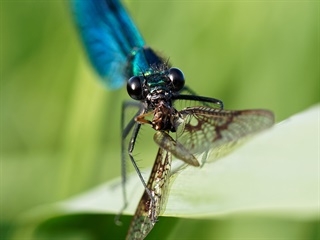Widgetized Section
Go to Admin » Appearance » Widgets » and move Gabfire Widget: Social into that MastheadOverlay zone
Impaired health of Gore Creek steadily improving, town of Vail reports

The health of Gore Creek through the heart of Vail is slowly improving, according to town of Vail officials who issued the following press release on Monday:
Gore Creek has been on the state’s 303(d) list of impaired waterways for failing to meet standards for aquatic life since 2012. Recently processed 2017 data seems to support improvement – shown in the 2016 data, suggesting that community efforts to “Restore the Gore” may be having the desired effect.
Aquatic entomologist, Dave Rees has collected and analyzed hundreds of thousands of individual insects from Gore Creek, the Eagle River and their tributaries since 2009. The Multimetric Index (MMI) is the standard metric used to determine whether a stream is healthy for aquatic life, which evaluates the quantity and diversity of sensitive insects like stoneflies, mayflies and caddisflies.
Of the nine locations monitored on Gore Creek, six were failing in 2015. In 2016 and 2017, only three sites failed to meet state standards. Sampling sites at the East Vail interchange, in Lionshead upstream of the wastewater treatment plant, and at Stephens Park failed to meet state standards in 2017, while sites at Ford and Bighorn Parks, downstream of the wastewater treatment plant and above the confluence with the Eagle River have passing scores.
Causes of impairment are varied, including polluted stormwater runoff from impervious surfaces, chemical and pesticide use associated with land use activities, and the loss of riparian area along the Creek. In the last several years, the town has restored several miles of riparian buffer, reduced its chemical tree spraying by 90 percent, implemented education programs for the public and for landscaping professionals, and installed over $1.2 million in stormwater infrastructure projects.
In addition, community members are diligent in reporting illegal dumping or spills into storm drains and reporting them to the Gore Creek spill hotline. “All of the combined actions of the community, partners like the Eagle River Water and Sanitation District and the Eagle River Watershed Council, and the leadership of the Vail Town Council in supporting educational and infrastructure programs have contributed to the restoration of the creek,” says the town’s environmental sustainability manager Kristen Bertuglia.
The town’s watershed education coordinator Pete Wadden says that because the town only owns roughly 38 percent of the creek corridor, the actions of individual property owners to the health of the creek is critical. “I’ve been encouraged by the willingness of the community to convert turf grass lawns to a healthy riparian area with native plants through Project Re-Wild,” he says. Project Re-Wild is a public-private cost share program initiated by the town to financially incentivize creek bank restoration projects.
The Eagle River Water & Sanitation District began macroinvertebrate sampling a decade ago as the state was developing new water quality criteria for nitrogen and phosphorous. When early results showed low MMI scores in Gore Creek far upstream of the district’s wastewater treatment facility, the Town quickly partnered to address stream health as a community issue. “The Town has helped our residents, business owners, and guests understand that their actions contribute to restoring Gore Creek,” said district communications and public affairs manager Diane Johnson. “We hope the improved 2016 and 2017 sampling results are the beginning of a trend!”
On Tuesday, Jan. 8, Rees will present the most recent bug score data he has processed to the Vail Town Council, and at a free Lunch with the Locals event at noon at the Grand View, located on the third level of the Lionshead Welcome Center.
For more information contact Kristen Bertuglia, environmental sustainability manager, kbertuglia@vailgov.com, 970-477-3455.


